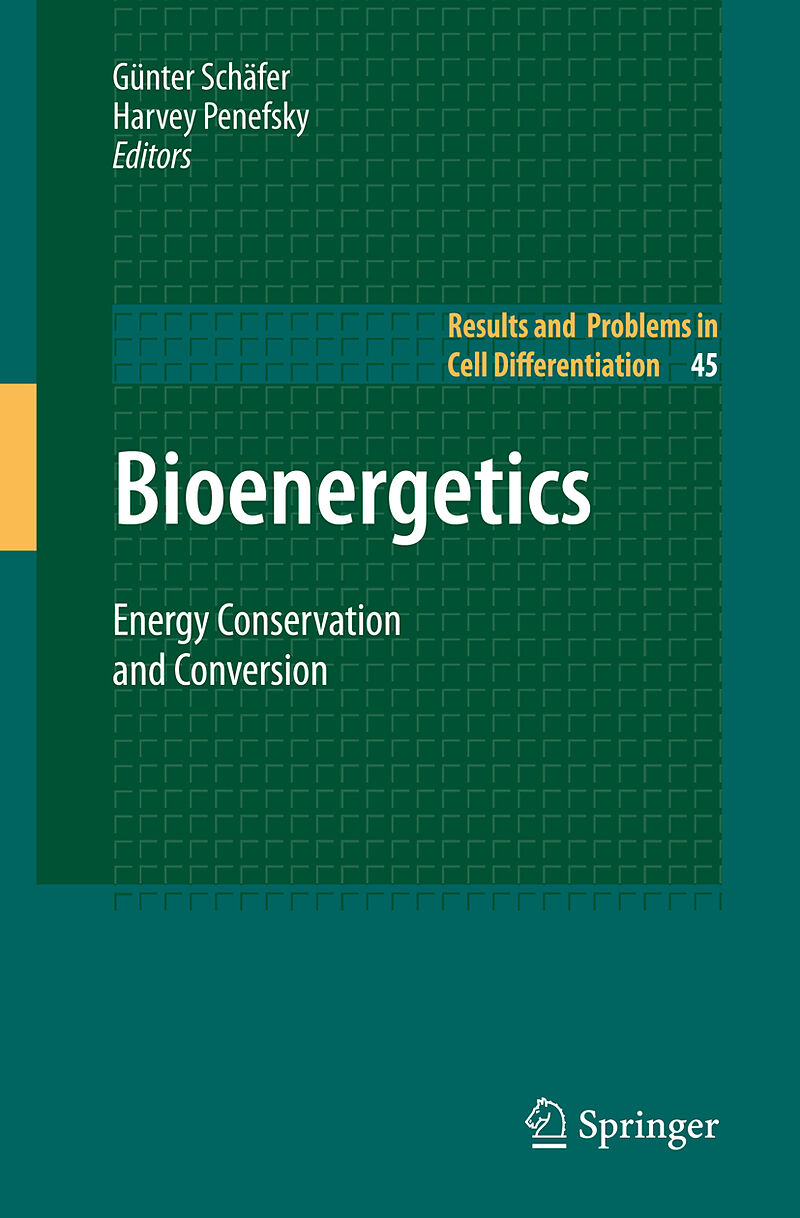Bioenergetics
Format:
E-Book (pdf)
EAN:
9783540786221
Untertitel:
Energy Conservation and Conversion
Genre:
Biologie
Herausgeber:
Springer
Anzahl Seiten:
312
Erscheinungsdatum:
24.05.2008
ISBN:
978-3-540-78622-1
The present book addresses fundamental questions of biological energy transformation and conservation, with a focus on those processes which can now be understood on a structural basis. Current knowledge of selected examples of the biological energy conservation machinery such as cellular oxygen respiration, light-driven energy converters, and fermentation is reviewed. The machinery is highly variable, particularly that within microorganisms, but all of these devices universally rely on one unique underlying physico-chemical principle. The book is a rich source for specialists interested in recent developments in bioenergetics research and novices in the field alike.
Zusammenfassung
The fermentation of sugar by cell-free yeast extracts was demonstrated more than a century ago by E. Buchner (Nobel Prize 1907). Buchner's observations put an end to previous animistic theories regarding cellular life. It became clear that metabolism and all cellular functions should be accessible to explication in chemical terms. Equally important for an understanding of living systems was the concept, explained in physical terms, that all living things could be cons- ered as energy converters [E. Schrödinger (Nobel Prize 1933)] which generate complexity at the expense of an increase in entropy in their environment. Bioenergetics was established as an essential branch of the biochemical sciences by the investigations into the chemistry of photosynthesis in i- lated plant organelles [O. Warburg (Nobel Prize 1931)] and by the discovery that mitochondria were the morphological equivalent that catalyzed cellular respiration. The ?eld of bioenergetics also encompasses a large variety of ad- tional processes such as the molecular mechanisms of muscle contraction, the structure and driving mechanisms of microbial ?agellar motors, the energetics of solute transport, the extrusion of macromolecules across membranes, the transformation of quanta of light into visual information and the maintenance of complex synaptic communications. There are many other examples which, in most cases, may perform secondary energy transformations, utilizing - ergy stored either in the cellular ATP pool or in electrochemical membrane potentials.
Inhalt
Diversity of the HemeCopper Superfamily in Archaea: Insights from Genomics and Structural Modeling.- Structure of Photosystems I and II.- Microbial Rhodopsins: Scaffolds for Ion Pumps, Channels, and Sensors.- Life Close to the Thermodynamic Limit: How Methanogenic Archaea Conserve Energy.- ATP Synthesis by Decarboxylation Phosphorylation.- The Three Families of Respiratory NADH Dehydrogenases.- Hydrogenases and H+-Reduction in Primary Energy Conservation.- A Structural Perspective on Mechanism and Function of the Cytochrome bc 1 Complex.- Regulatory Mechanisms of Proton-Translocating FOF1-ATP Synthase.

Leider konnten wir für diesen Artikel keine Preise ermitteln ...
billigbuch.ch sucht jetzt für Sie die besten Angebote ...
Die aktuellen Verkaufspreise von 3 Onlineshops werden in Realtime abgefragt.
Sie können das gewünschte Produkt anschliessend direkt beim Anbieter Ihrer Wahl bestellen.
Loading...
Die aktuellen Verkaufspreise von 3 Onlineshops werden in Realtime abgefragt.
Sie können das gewünschte Produkt anschliessend direkt beim Anbieter Ihrer Wahl bestellen.
| # | Onlineshop | Preis CHF | Versand CHF | Total CHF | ||
|---|---|---|---|---|---|---|
| 1 | Seller | 0.00 | 0.00 | 0.00 |
